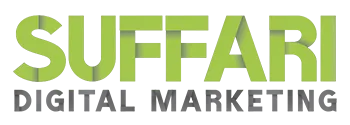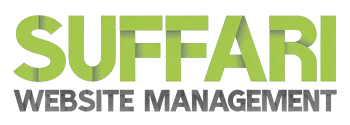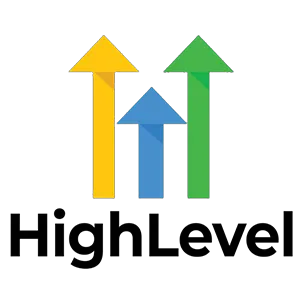
What Is a Meta Description? - Suffari
Table of Contents
What Is a Meta Description?
Understanding Meta Descriptions
Characteristics of Effective Meta Descriptions
Best Practices for Crafting Meta Descriptions
Meta Description Optimization Strategies
Impact of Meta Descriptions on SEO
Onsite SEO included in Suffari’s Website Management Services
Understanding Meta Descriptions
A meta description is a brief summary of a webpage's content that appears in search engine results. It provides users with a quick overview of what they can expect to find on the page, helping them decide whether to click on the link. Understanding how to craft effective meta descriptions can improve your website's visibility and attract more visitors.
Definition and Purpose
A meta description is a brief summary of a webpage's content that appears in search engine results below the page title. Its primary purpose is to provide users with an overview of what they can expect to find on the page, helping them decide whether to click on the link. Well-crafted meta descriptions can improve click-through rates and enhance the visibility of a website in search engine rankings.
Role in Search Engine Results
A meta description is a brief summary of a webpage's content that appears in search engine results. It helps users understand what the page is about before clicking on the link. Well-written meta descriptions can improve click-through rates and attract more visitors to your website.
Characteristics of Effective Meta Descriptions
A meta description is a brief summary of a webpage's content that appears in search engine results. It helps users understand what the page is about before clicking on the link. An effective meta description should be clear, concise, and relevant to the page content, encouraging users to visit the site.
Characteristics of an effective meta description include being between 150-160 characters, incorporating relevant keywords naturally, and providing a compelling call-to-action or unique value proposition. It should accurately reflect the content of the webpage without being overly promotional. Well-crafted meta descriptions can improve click-through rates and enhance search engine optimization.
Best Practices for Crafting Meta Descriptions
A meta description is a concise summary of a webpage’s content that appears in search engine results. Crafting effective meta descriptions is essential for attracting clicks and improving visibility. Following best practices ensures your snippets stand out, accurately represent your page, and entice users to visit your site.

Length Recommendations
A meta description is a brief summary of a webpage's content that appears in search engine results. Crafting effective meta descriptions can improve click-through rates and attract the right audience. To optimize these snippets, it's essential to follow best practices for clarity and relevance.
Keep meta descriptions concise, ideally between 150 to 160 characters on most post types. However, meta description lengths vary between different page and post types. This length ensures that your entire message displays properly without getting truncated in search results. Use clear, compelling language that accurately reflects the page content and includes relevant keywords naturally. Avoid keyword stuffing, which can diminish readability and user trust.
Focus on creating unique descriptions for each page to provide value and context to searchers. Incorporate a call-to-action when appropriate to encourage clicks. Regularly review and update your meta descriptions to stay aligned with evolving content and search engine algorithms. Following these best practices enhances visibility and encourages more users to visit your website.
Keyword Integration
A meta description is a brief summary of a webpage's content that appears below the page title in search engine results. Crafting effective meta descriptions is essential for attracting clicks and improving SEO performance. To do this, keep your descriptions concise, ideally between 150-160 characters, to ensure they display fully on search results.
Incorporating relevant keywords naturally within your meta descriptions helps search engines understand the page's topic and can improve visibility for targeted searches. Focus on including primary keywords early in the description without keyword stuffing, which can harm readability and SEO.
Write compelling and clear language that accurately reflects the content of the page, encouraging users to click through. Use call-to-action phrases when appropriate, such as inviting users to learn more or explore solutions. Regularly review and optimize your meta descriptions to adapt to changing search trends and maintain high click-through rates.
Call-to-Action Elements
A meta description is a brief summary that appears below your webpage title in search engine results, providing users with an overview of the page content. Crafting effective meta descriptions involves incorporating relevant keywords naturally and ensuring they accurately reflect the page's main message. Keep descriptions concise, ideally between 150-160 characters, to prevent truncation in search listings.
When writing meta descriptions, include a compelling call-to-action to encourage users to click through to your site. Use action-oriented language such as "Discover," "Learn," or "Get started" to motivate engagement. Additionally, make each meta description unique for different pages to improve SEO performance and avoid duplication penalties. Regularly review and update meta descriptions to align with evolving content and user search intent.
Unique and Relevant Content
A meta description is a concise summary of a webpage's content that appears in search engine results. Crafting effective meta descriptions is essential for attracting clicks and improving SEO performance. To ensure your meta descriptions stand out, follow best practices that emphasize uniqueness and relevance.
Keep it concise: Limit your meta description to around 150-160 characters to ensure it displays properly in search results.
Use relevant keywords: Incorporate target keywords naturally to improve visibility and relevance for search queries.
Make it compelling: Write engaging and persuasive language to encourage users to click on your link.
Ensure uniqueness: Create a distinct meta description for each page to avoid duplication and improve page-specific ranking.
Reflect the page content accurately: Provide an honest summary that matches what visitors will find on the page.
Include a call-to-action: Phrases like "Learn more," "Discover," or "Get started" can motivate users to visit your site.
Avoid keyword stuffing: Focus on readability and value rather than overloading with keywords.

Meta Description Optimization Strategies
A meta description is a brief summary that appears below your webpage title in search engine results, providing users with a quick overview of your page's content. Optimizing meta descriptions is crucial for attracting clicks and improving your site's visibility. Effective strategies involve crafting concise, relevant, and enticing descriptions that accurately reflect the page content while incorporating targeted keywords.
Analyzing Competitors
A meta description is a brief summary that appears below the title in search engine results, providing users with a snapshot of the webpage content. Optimizing this snippet is crucial for attracting clicks and improving search visibility. One effective strategy is to include relevant keywords naturally, ensuring the description accurately reflects the page content. Analyzing competitors involves reviewing their meta descriptions to identify common phrases, keyword usage, and unique selling points that resonate with your target audience. By understanding what others are doing well, you can craft compelling meta descriptions that stand out and entice users to visit your site. Additionally, keeping meta descriptions concise, typically between 150-160 characters, ensures entire messages display properly in search results. Regularly updating and testing different descriptions can also help determine what drives higher click-through rates, ultimately enhancing your SEO performance.
A/B Testing Variations
A meta description is a brief summary that appears below a webpage's title in search engine results, influencing click-through rates and user engagement. Optimizing these descriptions involves crafting clear, compelling, and relevant text that accurately reflects the page content.
Meta description optimization strategies include incorporating targeted keywords naturally, maintaining a concise length of around 150-160 characters, and ensuring each description is unique for different pages. This helps search engines understand the page better and improves visibility.
A/B testing variations of meta descriptions allows website owners to identify which versions resonate most with users. By experimenting with different wording, calls to action, or keyword placement, they can determine the most effective descriptions for maximizing click-through rates.
Regular review and updates based on performance metrics enable continuous improvement in meta description effectiveness, ultimately driving more traffic and enhancing overall SEO performance.
Using Tools for Optimization
A meta description is a brief summary of a webpage's content that appears below the page title in search engine results. Optimizing meta descriptions ensures they are compelling, relevant, and concise, which can improve click-through rates and enhance search visibility. Effective strategies include incorporating target keywords naturally, making each description unique and informative, and keeping it within 150-160 characters to ensure complete display on search engines.
Using tools for optimization can significantly streamline this process. SEO tools like Yoast SEO, SEMrush, and Ahrefs offer features that analyze your meta descriptions, suggest improvements, and ensure they align with best practices. These tools can highlight keyword usage, check length restrictions, and provide insights into how your descriptions compare with competitors. Additionally, Google Search Console helps monitor how your meta descriptions perform, enabling ongoing refinement to maximize their effectiveness.

Common Mistakes to Avoid
A well-crafted meta description is essential for effective search engine optimization and attracting users to click on your web pages. However, many people make common mistakes that can diminish the impact of their meta descriptions. Understanding these pitfalls can help you create more compelling and accurate summaries that improve your website's visibility and click-through rates.
Duplicate Descriptions
When creating a meta description, it is essential to avoid common mistakes that can hinder its effectiveness and impact on search engine results. One frequent error is duplicating descriptions across multiple pages, which can confuse search engines and diminish the uniqueness of your content.
Using the same meta description for different pages, leading to poor SEO performance
Writing overly generic or vague descriptions that do not accurately reflect page content
Overloading the description with keywords, which can appear spammy and reduce readability
Exceeding the optimal length, making the description cut off in search results
Neglecting to include a clear call-to-action or value proposition
Keyword Stuffing
When creating a meta description, one common mistake to avoid is keyword stuffing. Overloading your description with keywords can make it seem unnatural and penalize your site in search engine rankings. Instead, focus on crafting a clear, concise, and compelling summary that accurately reflects the content of your page. Keep keywords relevant and used naturally within the sentence, ensuring the meta description remains engaging and readable for users. Remember, a well-written meta description can improve click-through rates and enhance your website's visibility without resorting to excessive keyword use.
Misleading Information
When crafting a meta description, one common mistake is including misleading information that doesn't accurately reflect the page content. This can frustrate users and harm your click-through rate. Avoid making it too generic or overly promotional, which may seem insincere. Additionally, avoid keyword stuffing, as it can appear spammy and reduce readability. Ensure your meta description is concise, relevant, and provides a clear summary of what users can expect on the page. Misleading descriptions can lead to higher bounce rates and damage your site's credibility in search engine rankings.

Impact of Meta Descriptions on SEO
A meta description plays a crucial role in shaping how your website appears in search engine results, directly impacting click-through rates and overall SEO performance. As a brief summary of a webpage's content, a well-crafted meta description helps attract potential visitors by providing clear and enticing information. Understanding the impact of meta descriptions on SEO is essential for optimizing your site and improving its visibility online.
Click-Through Rates
A meta description is a concise summary of a webpage's content that appears below the page title in search engine results. It plays a crucial role in influencing both SEO and user engagement. Well-crafted meta descriptions can improve click-through rates by providing clear and enticing information about the page. Search engines often use these descriptions to determine the relevance of a page to a user's query, which can impact rankings. Therefore, optimizing meta descriptions with relevant keywords and compelling language can enhance visibility and attract more visitors, ultimately boosting the overall effectiveness of a website's SEO strategy.
Search Rankings
A meta description is a brief summary of a webpage's content that appears beneath the page title in search engine results. It serves as a concise preview to inform users about what they can expect from the page. While meta descriptions do not directly influence search rankings, they play a crucial role in SEO by affecting click-through rates. Well-crafted meta descriptions that include relevant keywords and compelling language can attract more users to click on your link, thereby increasing organic traffic. Improved click-through rates can indirectly boost your search rankings, as search engines interpret high engagement as a sign of valuable content. Therefore, optimizing meta descriptions is an essential aspect of effective SEO strategy, helping your pages stand out in search results and drive more visitors to your website.
Wrapping Up
A meta description is a brief summary of a webpage's content that appears in search engine results. It provides users with a quick overview of what to expect on the page and can influence their decision to click on the link. Effective meta descriptions are concise, relevant, and include targeted keywords to enhance visibility and are an integral part of a website's onsite SEO strategy.
Onsite SEO included in Suffari’s Website Management Services
Suffari’s Website Management Services specialize in optimizing meta descriptions to improve your website's search engine ranking, attract more visitors, and increase engagement by crafting compelling summaries that accurately reflect your content.
























Youtube